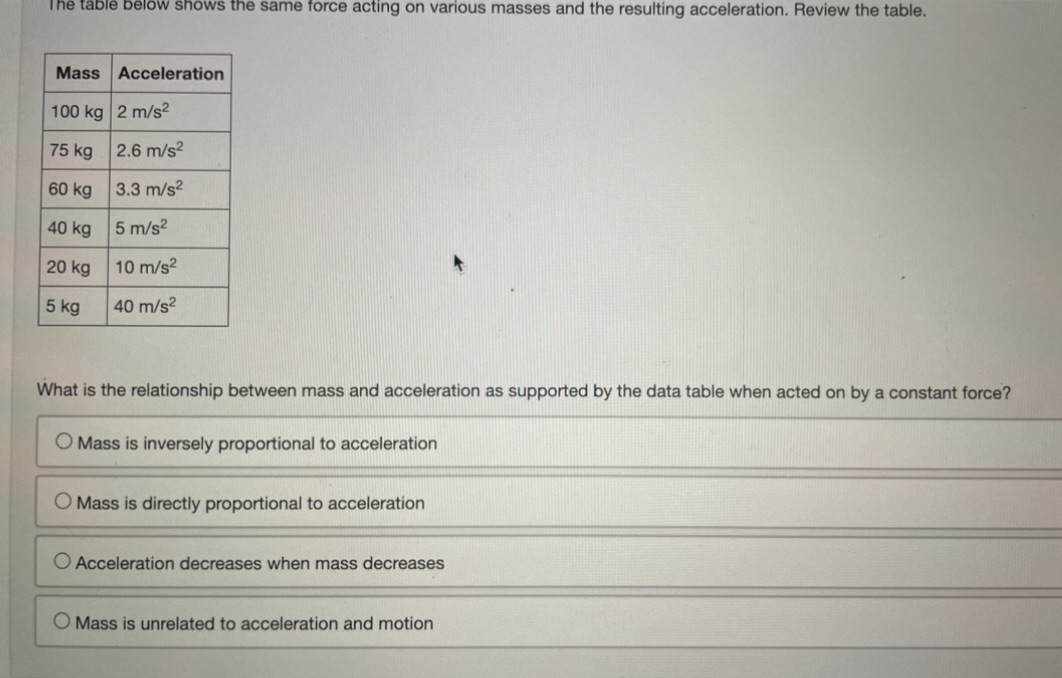Question
1) A net force of 10.0 N causes an object to accelerate at 2.00.m/s?. What is the mass of the object? A) 0.200 KG B)
1) A net force of 10.0 N causes an object to accelerate at 2.00.m/s?. What is the mass of the object? A) 0.200 KG B) 0.400 KGC) 5.00 KG D) 8.00 KG 2) A 2.6-kg object is being pulled upward with a force of 35 N. It's weight of 25 N opposes the upward force. What is the acceleration of the object?A) 0.71 m/s^2B)3.8 m/s^2C) 9.6 m/s^2D) 13 m/s^23) What net force is necessary to give a 2 kg mass that is initially at rest an acceleration of 5 m/s2?A) 0.4 NB) 3 NC) 7 ND) 10 N4) A horizontal force of 50 N is required to push a wagon across a sidewalk at a constant speed.a. What is the net (unbalanced force acting on the wagon?b. What forces are acting on the wagon?c. If the mass on the wagon increased, use Newton's second law to explain what must change to get the object moving at constant speed.

Step by Step Solution
There are 3 Steps involved in it
Step: 1

Get Instant Access to Expert-Tailored Solutions
See step-by-step solutions with expert insights and AI powered tools for academic success
Step: 2

Step: 3

Ace Your Homework with AI
Get the answers you need in no time with our AI-driven, step-by-step assistance
Get Started


